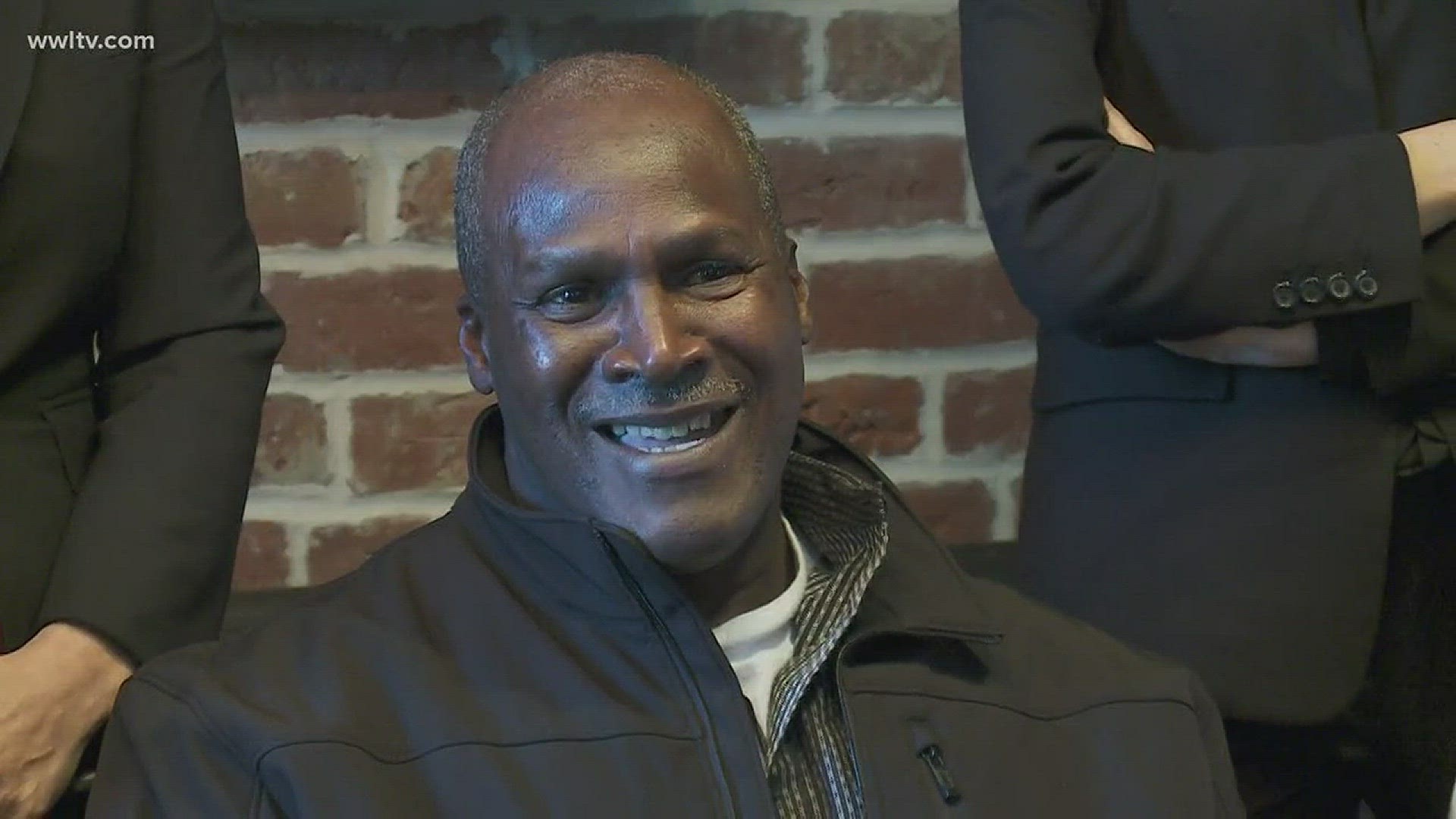GRETNA, La. -- Malcom Alexander tasted freedom on Tuesday for the first time in nearly four decades.
The Jefferson Parish man was convicted of rape in 1980 after a tentative identification from the victim. He professed his innocence the entire time.
He was finally released after DNA evidence proved those claims were true. Sleep did not come east Monday.
“It was hard to believe,” he said Tuesday while flanked by his son and 20-year-old grandson. “I mean, I’ve been up all night anticipating, wondering, ‘Is this really happening?’”
Jefferson Parish District Attorney Paul Connick said in a prepared statement that his office investigated the case again and found “the defense attorney during the daylong trial 37 years ago provided ineffective representation in violation of his (Alexander’s) constitutional rights.”
Alexander’s lawyer was later disbarred after complaints of neglect and abandonment were filed against him in connection with dozens of other cases, the Innocence Project New Orleans said.
“The stakes in this case couldn’t have been higher for Mr. Alexander, who faced a mandatory sentence of life without parole, yet the attorney that he entrusted with his life did next to nothing to defend him,” said Vanessa Potkin, post-conviction litigation director at the Innocence Project. “It is simply unconscionable.”
The rape for which Alexander was convicted happened Nov. 8, 1979.
The Innocence Project said the owner of an antique store on Whitney Avenue in Gretna, a white female, was grabbed from behind by a black man and taken to a bathroom in the empty store where she was raped from behind with a gun to her head.
Three months later, the Innocence Project said, Alexander had a consensual encounter with a woman who asked him for money and later accused him of sexual assault.
Police later found that claim was untrue, but Alexander’s photo was placed in a lineup shown to the woman who was raped at gunpoint. The Innocence Project noted that the man who raped the victim was behind her the entire time, leaving her little opportunity to look at him.
Police reports said the victim “tentatively” selected Alexander’s photo as that of her attacker. Three days later, Alexander was shown to the victim in person as part of a physical line-up.
The victim made a “possible” identification of Alexander as her attacker, and the word “tentative” was written next to his line-up number, according to the Innocence Project.
The lead detective interviewed the victim, who said she was 98 percent sure Alexander raped her. At trial, she testified that she had no doubt it was him, the Innocence Project said.
Blood-type testing of a rape kit could have supported the victim’s claim or proved Alexander was innocent. The Innocence Project said that was never sought.
Additionally, the group noted, research has shown that multiple identification procedures can cause a witness to become confused about if he or she recognizes the person from the crime while also making the witness more confident in his or her identification.
“In the nearly four decades since Mr. Alexander was wrongly convicted, we have learned how to greatly reduce the possibility of misidentification through improved eyewitness identification procedures, but Louisiana has yet to adopt these best practices,” said Emily Maw, director of Innocence Project New Orleans. “We hope Mr. Alexander’s case will inspire lawmakers to take up this issue as soon as it goes back in session in March.”
The Innocence Project reviewed the trial record and found Alexander’s attorney failed to make court appearance and did not file several pleadings, including a motion to challenge the identification.
During the trial, he also failed to make an opening statement, did not call any witnesses and failed to “adequately” cross-examine the state’s witnesses about the identification.
“Although the attorney promised to file an appeal of the verdict, he never filed it,” the Innocence Project noted.
The Innocence Project took up Alexander’s case in 1996 but learned the rape kit and a towel used as evidence were destroyed four years after the conviction. Five years ago, hair evidence recovered from the scene was found at the Jefferson Parish Sheriff’s Office Crime Lab.
The Innocence Project had DNA testing of the hair done. None of the strand’s profiles matched Alexander’s
After his release Tuesday, Alexander said he wanted one thing: a feast of fish and shrimp.

